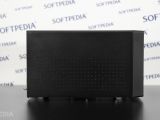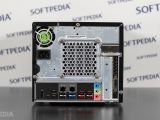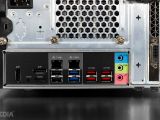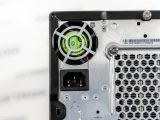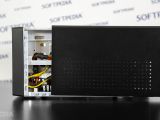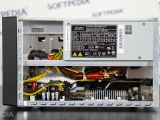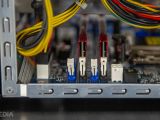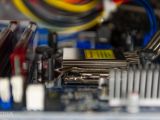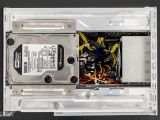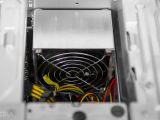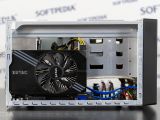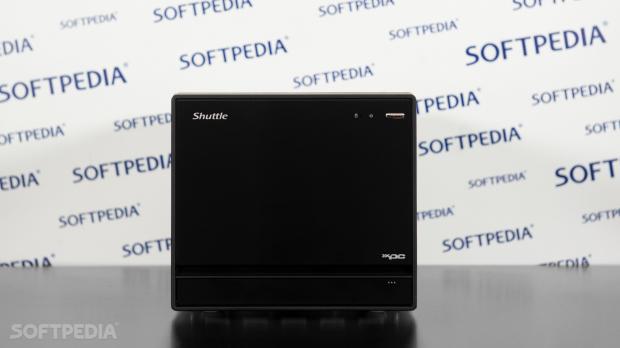The Shuttle XPC SH370R8 might not have the best possible name, but with the right hardware configuration, it can be a powerhouse, all squeezed into a small, black cube that sits quietly on a desk.
We usually think of PCs in their middle tower format, with plenty of space to fit anything you might want inside. There’s nothing wrong with that, but the market is big enough to encompass all other form factors, and that includes the small Shuttle series.
Of course, the form factor for a PC is usually reflected by the usage, and by the environment it’s going into. That means that people will often buy what they need, in a way that fits their life. Sometimes, users will need a smaller PC that can still pack a punch.
We have to keep in mind that for the most part, size is essential when it comes to the relationships between a PC's dimensions and their power. The more space you have in a PC, the more ventilation you can run through the case, which in turns means more power. Inevitably, small enclosures might run a little bit too hot, but you can be smart about it.
There are two ways to mitigate the high temperatures in a small case; choosing the right hardware and a smart design that allows the cooling process to work as best as possible given the size constraints. Both of these methods are employed by the Shuttle XPC SH370R8, which means that it’s running a lot cooler than you might guess just by looking at the case.
Design and usage
There are various scenarios for wanting a smaller case of the PC, and you’ve already probably seen some examples in offices, banks, or other situations, where the monitor sits on top the actual case.
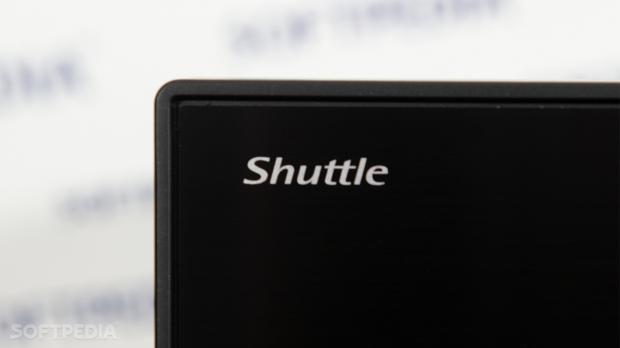
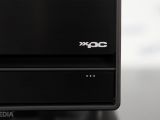
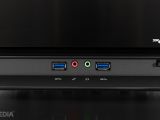
Since the Shuttle XPC SH370R8 resembles a small cube, that’s not all that feasible, but that doesn’t mean that it can’t be used in the same settings. It’s still a little big bigger in volume that regular office PCs, which means that it can be a lot more powerful as well. If you were to pack up the SH370R8 with the best of the supported hardware, you’re going to end up with a PC that can be used for design or gaming, which is not a small feat.
The case format is not unique, and it’s been used in other PCs as well. It’s even possible to buy similar cases if you want to build your PC from scratch. Regular users could make use of this format to host a media server at home, for example.
Features and specs
Although, I can’t but help to feel that possible buyers for this type of PC, might be underusing it. If we take a look at features, and what it can do, we’ll notice that’s it’s a lot more potent than people might give it credit.
First of all, the Shuttle XPC SH370R8 is using the Intel H370 Express chipset, which has support for Intel 8th generation core including i3, i5, i7, and Pentium Celeron 95W LGA1151v2 CPU. As you can see, there’s a lot of versatility.
It also has support for 64GB of RAM (DDR4 2400/2666MHz), but surprisingly the most exciting aspect has yet to come. If you choose to use the integrated graphics support, you will notice there’s an HDMI 2.0 port and two DisplayPort, capable of providing users triple independent display 4K playback.
Users can choose to add their own graphics card, and there’s enough room for a dual-slot, medium size graphics card. We used a 1060 GTX from Nvidia, and there was some room to spare. Of course, a custom graphics card means that the number of video outputs will differ from user to user.
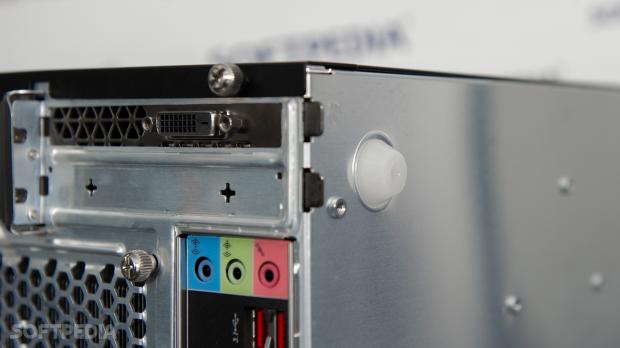

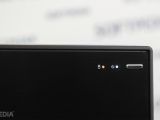
The Shuttle XPC SH370R8 also comes with support for four 3.5" HDD bays, but there’s no default support for 2.5" SSD. Fortunately, Shuttle does have an accessory called “3.5-inch to 2.5-inch HDD rack for all Cube XPC.” With that rack system, you can fit up to eight 2.5" SSD, which is not bad at all.
It’s also worth mentioning that the mini PC also features a dual gigabit LAN solution, which opens up various possibilities. It’s possible to have two different Internet providers or have the Shuttle XPC act as a router.
The front panel is rather basic, with two USB 3.0 ports, and two audio jacks, one for a headset and one for a microphone. On the back, we find two USB 2.0 ports, two USB 3.0 ports, and four USB 3.1 ports, which makes it future proof.
Lastly, I have to note the really good cooling solution for the CPU and the incredibly small power supply. The makers of the XPC say that it’s an 80 Plus 500W power supply (80 PLUS silver,) which is not too shabby, especially given the size.
The Good
The entire design is very well imagined, allowing for extensions and numerous usage scenarios. And despite the crowded nature of the XPC, the temperatures remain in the normal range. With a dual-slot 1060 GTX and two 3.5” drives, the idle temperature hovers somewhere between 35 and 40 degrees Celsius.
When I pushed the XPC into some work, the hardware temps never went above 65 degrees, which is more than commendable given just how little space there’s inside. The fact that the CPU cooler is stuck to the back of the case help a lot.
The Bad
The biggest problem is the lack of any dust filtering, but that’s also to be expected. Cooling such as small system would be a problem if the case also has dust filters. But that also means that you’re going to have to keep it above ground, most likely on a table, where there isn’t so much dust.
The last thing I have to mention is the fact that the case is a little rough around the edges, and that’s not a metaphor. I had to be careful around the back, not to mention that I had to pry the protective flaps that were covering where the external GPU back panel would have been.
Conclusion
For the XPC, the small size is actually an advantage, because it can help users to have other options than just a mid-tower PC, for example. There are very few reasons not to like the XPC, so the only possible conclusion is that it might be exactly what you need.
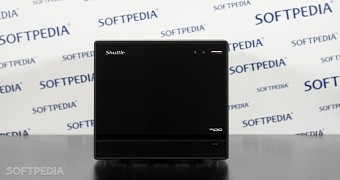
 14 DAY TRIAL //
14 DAY TRIAL // 